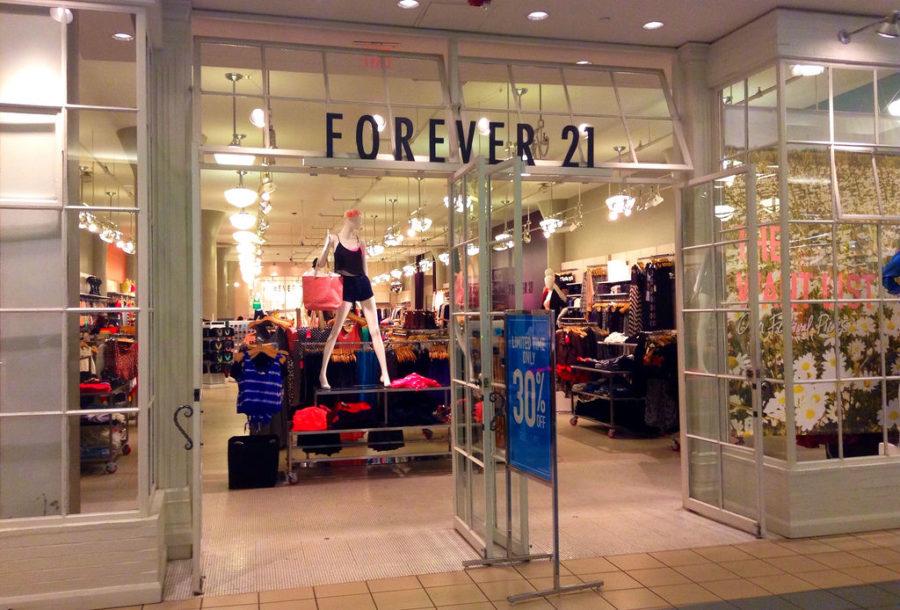Westberg: The global impact on fast fashion
Forever 21
February 13, 2019
Being a college student, it can be hard to keep up with and afford the latest fashion trends. Having money left after paying for food, rent, tuition, amongst the various other things I need to survive is a rarity, but always spent on clothes. Keeping your budget can be hard when you want to fit in with the latest styles, especially if you’re like me and enjoy a good impromptu shopping trip from time to time.
Retail therapy is one of my many guilty pleasures, but buying clothes from the department stores and malls left me wondering how many pieces of clothing there actually are in the world.
A better question I started asking was, where do all of the clothes go after someone is done wearing them? I would like to say that they all get repurposed and go to thrift stores, but it’s unfortunate to say that most of them actually go into the trash. The average American throws away an astonishing 70 pounds of clothes per year.
The emergence this “fast fashion” lifestyle that we live in now is not helping us lessen the amount of clothes we get rid of either. Fast fashion is essentially how fast trends change and how larger clothing brands target consumers in order to make a profit.
Many times fast fashion-targeted clothing brands copy ideas from high-end designers and make them in a cheaper way, thus creating the “trickle down effect” of fashion. Stores such as Forever 21, Target and American Eagle are some examples of fast fashion distributors. Although it’s tempting to buy a good knock off every now and again, the truth is that it is stealing someone’s hard work.
There have been many cases where stores such as Forever 21 have simulated several different looks from high-end brands such as Gucci, Fendi and even some independent designers.
Obviously the idea of fast fashion can be considered immoral if you care about the feelings and intellectual property of the original designers. But if you don’t, there’s still the issue of the environmental impact fast fashion causes as well.
There is no denying that our environment is in big trouble with all of the polluted oceans, depleting forests, global warming and overflowing landfills, but adding clothing that could be reused to it is a shame.
Clothing makes up for over 9 percent of the United States solid waste, and the fast fashion lifestyle we live is a big cause of that. We are fed so many advertisements and “expectations” for clothes and fashion that we have become consumed by it.
While many people have no concerns or worries about buying clothes, there are many Americans who struggle. A shocking 15 percent of Americans in poverty who have expressed a need for winter coats do not have, or never have had a coat.
Many of these problems could be solved by people donating their coats to shelters or other donation centers. One of the biggest issues that makes clothes so expensive is the outrageous 52 percent markup that is put onto most clothes when they are first released.
Now hearing all of this may leave you asking, “Well, what do you want me to do about it?” Well the answer is to thrift more and be conscious of how often and where you buy!
One of my New Year’s resolutions was to not buy clothes more than twice a month and to thrift whatever I buy. From my experience I have saved at least $200 in the month that it has been since 2019 started. By shopping at thrift or consignment stores you can start a new life for a piece of clothing and decrease your impact on the world.
On top of the clear conscious you will have by repurposing your own and others’ clothing, you will also be saving a good amount of money. Although thrift stores cannot hold clothes forever, they give clothing a second shot by keeping them out of landfills for another few years, save you some serious money and decrease your need for the new shirt that you could have gotten at Target for six times the cost.







